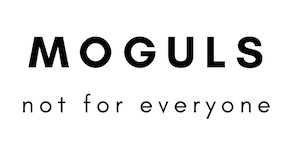A little-known fact is that most investment types are not protected by the Financial Services Compensation Scheme (FSCS). Yes, your broker is likely covered. But what happens if the firm that actually manages your investment funds blows up?
In that scenario, the only kind of vehicle you can expect to be protected is a UK domiciled Unit Trust or OEIC (Open-Ended Investment Company).
Offshore funds aren’t covered by FSCS compensation. Neither are ETFs or Investment Trusts.
In practice this means there’s no FSCS protection for a broad swathe of funds marketed to UK investors, because they’re either the wrong type or they’re domiciled in exotic, far-off lands like… Ireland.
Now you may be entirely comfortable with that, because your assets are lodged with a financial titan such as Vanguard or BlackRock. The chances of such a giant being wiped out – and so vaporising 100% of your assets in a hot mess of scandal and fraud – are exceedingly small.
But you can never rule out the possibility entirely. Which is why some Monevator readers prefer to invest in funds that should benefit from the FSCS scheme in a nightmare scenario.
If having the FSCS scheme as a backstop helps you sleep at night, then read on for our pick of low-cost UK domiciled funds provided by FCA authorised and regulated firms.
These funds should all be eligible for FSCS compensation (though it’s not an absolute certainty as we’ll explain in a sec), enabling you to build your passive investing strategy – as per our previous investment portfolio examples – with the knowledge that you couldn’t be any more protected.
Caveat Time!
The FSCS bends over backwards (and you might wonder why) to point out that compensation is not guaranteed just because a firm is FCA authorised and regulated.
The most reassurance you’ll get on each fund provider’s Financial Services Register page is:
The FSCS may be able to provide compensation if this firm goes out of business owing you money.
Hmm. Doesn’t exactly sound cast iron, does it? Moreover, check out the following piece of advice plastered liberally across the FSCS website:
Ask your firm to confirm that the activity they are carrying out for you is a regulated activity and FSCS protected.
Given that’s the lie of the land, then the best your plucky DIY investor champ Monevator can do is to say the following funds are all UK-domiciled Unit Trusts / OEICs, offered by fund firms that were FCA-authorised at the time of writing.
In other words, please follow the FSCS’ advice above to maximise your chances of being eligible for compensation, should you ever need it.
Beware too that compensation tops out at £85,000 per firm.
If Vanguard went bust, for example, the most you could claim from the FSCS is £85,000 – no matter how much you had invested in different Vanguard funds.
That won’t be a problem for some people, but 100% protection could become pretty laborious to maintain for those investors with larger portfolios.
At the very least it may require some creative juggling between different fund providers. Hence our selection focuses on enabling you to diversify your choice as much as possible.
Incidentally, you could go even further by including active managers in your scope. But on Monevator we typically major on keenly-priced index trackers, so that’s our focus today.
Enough with the ambling pre-amble, let’s get into our list of FSCS-eligible funds.
Global / All-World equity (Developed world and emerging markets)
- HSBC FTSE All-World Index Fund C
- OCF 0.13%
- Fidelity Allocator World Fund W
- OCF 0.2%
- Vanguard FTSE Global All Cap Index Fund
- OCF 0.23%
Developed world equity
- L&G Global 100 Index Trust C Inc
- OCF 0.09%
- Fidelity Index World Fund P
- OCF 0.12%
- L&G Global Equity Index Fund
- OCF 0.13%
- Vanguard FTSE Dev World ex-UK Equity Index Fund
- OCF 0.14%
- Aviva Investors International Index Tracking Fund 2
- OCF 0.25% (ex-UK fund)
UK large cap equity
- HSBC FTSE All Share Index Fund Institutional
- OCF 0.02%
- iShares UK Equity Index Fund (UK) D
- OCF 0.05%
- Vanguard FTSE UK All Share Index Unit Trust
- OCF 0.06%
- Fidelity Index UK Fund P
- OCF 0.06%
Emerging markets equity
- Fidelity Index Emerging Markets P
- OCF 0.2%
- iShares Emerging Markets Equity Index Fund (UK) D
- OCF 0.21%
- L&G Global Emerging Markets Index I
- OCF 0.25%
Property – global
- iShares Environment & Low Carbon Tilt Real Estate Index Fund (UK)
- OCF 0.17%
- L&G Global Real Estate Dividend Index Fund I
- OCF 0.22%
UK government bonds
- Fidelity Index UK Gilt Fund P
- OCF 0.1%
- iShares UK Gilts All Stocks Index Fund
- OCF 0.11%
- HSBC UK Gilt Index C Acc
- OCF 0.13%
- Vanguard UK Long-Duration Gilt Index Fund
- OCF 0.12%
- abrdn Sterling Short Term Government Bond Fund
- OCF 0.25% (Active management)
Global government bonds hedged to £
- abrdn Global Government Bond Tracker B
- OCF 0.14%
Global inflation-linked bonds hedged to £
- abrdn Short Dated Global Inflation-Linked Bond Tracker Fund
- OCF 0.13%
- L&G Global Inflation Linked Bond Index Fund I
- OCF 0.23%
- Royal London Short Duration Global Index Linked Fund M
- OCF 0.27% (Active management)
Useful pointers
As always, make sure you do your research to ensure these funds are the right fit for your portfolio. Morningstar and the fund provider’s own factsheets are good starting points.
We’ve ranked our selection purely by cost (as measured by OCF). Check out other Monevator pieces for more on how to choose the best global tracker funds and the best bond funds.
You’ll often find more index funds available in each category if you need them. There’s a good slate of US tracker funds available too – but nothing doing for gold or commodities.
You can quickly tell if a fund is UK domiciled by checking its webpage or by looking out for the designation GB in its ISIN number.
Market-leading index fund providers
To diversify your passive fund holdings as much as possible, check out these investment firms for your FSCS-eligible OEIC / Unit Trust needs:
- Vanguard AKA Vanguard Investments UK Limited, FRN 494699
- iShares AKA BlackRock Fund Managers Limited, FRN 119292
- Fidelity AKA FIL Investment Services (UK) Ltd, FRN 121939
- HSBC AKA HSBC Global Asset Management (UK) Ltd, FRN 122335
- L&G AKA Legal & General (Unit Trust Managers) Ltd, FRN 119273
- Abrdn AKA abrdn Fund Managers Limited, FRN 121803
- Royal London AKA Royal London Unit Trust Managers Ltd, FRN 144037
- Aviva AKA Aviva Investors UK Fund Services Limited, FRN 119310
You can investigate a firm’s FSCS particulars by typing its FRN into the Financial Services Register page.
Bear in mind that the FSCS scheme kicks in only if a firm fails and the value of your assets is otherwise irrecoverable. (And it only protects you up to the exciting £85,000 limit, of course).
The Financial Ombudsman holds sway in other scenarios.
Do you need to go to these lengths?
Personally, I don’t worry about whether my funds are FSCS protected. Insisting upon it would cause a level of stress (induced by excessive portfolio management) that isn’t worth it to me. At least versus the low probability of ever calling upon the scheme for a bail out.
But all that really matters is that you are comfortable with your investing choices.
If you’d like to create a ‘It helps me sleep at night’ portfolio then I hope the fund list above speeds you on your way to the Land of Nod.
Take it steady,
The Accumulator





